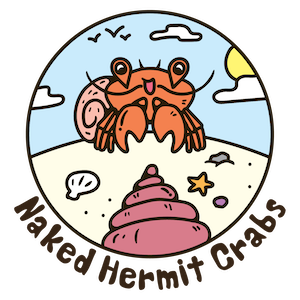It's been three weeks since our monthly nature trip to Chek Jawa Boardwalk on 23rd October. One of our visitors, Jimmy, forwarded a zip file of wonderful photographs taken during the trip. So, with permission from the photographer, Tan Wei Sheng, I am sharing his photographs with you here. Enjoy!
This is the path towards Chek Jawa. This used to be a rubber plantation, but the business of rubber tapping has long stopped, and the rubber estates in Pulau Ubin are gradually turning into secondary forests with a wide variety of plants and trees growing naturally in between the rubber trees.
This is the start of the boardwalk on the way to Jejawi Tower. The boardwalk was officially open to the public on 7 July 2007. With the boardwalk, we can now enjoy the inner and outer mangrove areas without getting our shoes covered with mud. The boardwalk is a wonderful place to observe animals like mudskippers, snakes, crabs and birds.
This is the fruit from the attap palm, also known as the nipah palm. And as its name suggests, the seeds of this fruit are indeed the "attap ji" that many of us enjoy in our chendol and ice kacang desserts. The attap seeds are boiled in syrup for several hours in order to achieve the chewy texture of "attap ji". So the next time you eat your "attap ji", please remember the natural mangrove habitats that support the growth of attap palms. Mangroves are a vanishing sight in modern Singapore.
CH, one of our volunteers, is photographed here as she shares a story about the mud lobsters of Chek Jawa. The mud lobsters are shy creatures and they seldom venture out of their hiding places during the day. However, their presence can be felt by the sight of mud mounds that literally change the landscape of the mangroves. The tunnels made by the mud lobsters are home to numerous other animals such as crabs, spiders, scorpions and even snakes.
The stilt roots of the bakau kurup mangrove trees form an artistic picture. When the tide rises, the roots are covered by sea water, and it becomes a safe refuge for small fishes along the coastal areas.
The Sea Hibiscus Tree is commonly found along the coastal areas of Pulau Ubin. The flowers of the Sea Hibiscus change in colour from yellow to orange to wine red over 2 to 3 days.
This is the jetty in front of the Summer Cottage.
The visitors managed to see a family of wild boars near the visitor centre. This young wild boar is quite skinny and was seen wandering around the area on his own. We wonder if he is an orphaned piglet. Wild boars are a common sight in Pulau Ubin. They have an excellent sense of smell which helps them to detect yummy roots, fruits and shoots in the undergrowth of the forests. We appeal to visitors not to feed the wild boars so that they do not acquire a taste for our kind of food.
To end, thanks go out to our volunteer guides, Ria, CH, LK and, not forgetting, Joan who came to learn more about guiding and volunteering at Chek Jawa.
To register for our monthly free walks at Chek Jawa Boardwalk or to enquire about volunteering opportunities, please write to nakedhermitcrabs@gmail.com.



.jpg)




.jpg)
No comments:
Post a Comment